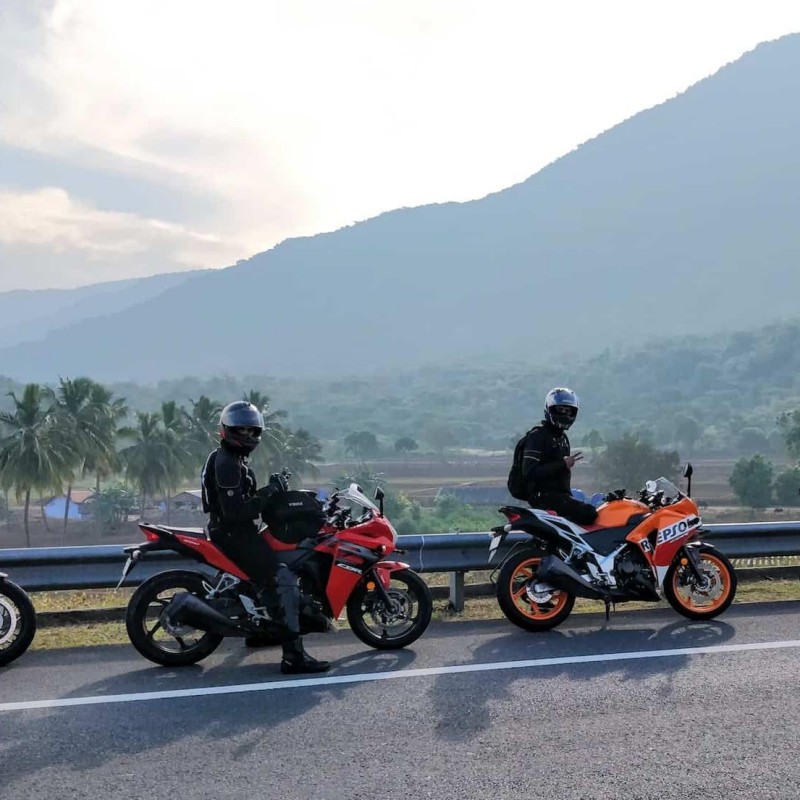Introduction
Embarking on group rides can be one of the most exhilarating experiences for riders, offering camaraderie and shared adventure. However, to ensure safety and effective coordination, proper communication systems for group rides are essential. Riders need to stay connected to share important information such as route changes, hazard alerts, and pit stops. Miscommunication can lead to confusion, missed turns, and, ultimately, safety risks. Modern advancements in technology have introduced various tools, from radios and headsets to mobile apps, designed to facilitate clear communication among riders. This comprehensive guide will explore the different types of communication systems available for group rides, their features, benefits, and practical suggestions to improve safety and enjoyment while riding in groups. Whether you are an experienced rider looking to enhance your group ride experience or a newcomer interested in how to communicate effectively while on the road, this article will provide invaluable insights.
The Importance of Communication in Group Rides
Effective communication is fundamental when participating in group rides. Understanding why proper communication systems for group rides are vital can greatly enhance the overall riding experience.
Safety First
One of the most critical aspects of group rides is safety. Riders are often exposed to various stretching roads which can pose significant risks.
- Alerting Fellow Riders: With effective communication, riders can quickly alert fellow cyclists about changing conditions, road hazards, or emergencies.
- Avoiding Misunderstandings: Clear communication helps prevent situations where a rider might take a wrong turn or misinterpret signals among the group.
Enhancing Coordination
Group rides often involve navigating complex routes, which requires seamless coordination among all participants.
- Route Management: Communication systems allow for easy updates to the navigation, ensuring that the entire group stays on track and reaches designated stops together.
- Pacing: Constant communication helps maintain an appropriate riding pace, accommodating slower or faster members of the group. This prevents frustration and enhances the overall experience.
Strengthening Group Dynamics
Participating in group rides can be as much about building relationships as it is about enjoying the ride itself.
- Social Interaction: Communication allows riders to interact, share stories, and connect on a deeper level. The shared journey becomes more enjoyable as riders engage in conversation throughout the ride.
- Fostering Team Spirit: A strong communication system helps cultivate an environment of teamwork. Riders feel more supported and connected, creating a positive group dynamic.
Types of Communication Systems for Group Rides
Various options are available when it comes to communication systems for group rides. Each option has unique features, benefits, and drawbacks.
Two-Way Radios
Description: Two-way radios are a traditional option for communication, especially for larger groups. They function similarly to walkie-talkies, allowing instant voice communication.
- Advantages:
- They provide wide-range communication without the need for a cellular network.
- Two-way radios usually offer good battery life, enabling extended use during rides.
- Disadvantages:
- Limited to voice communication; no additional features like messaging or navigation updates.
- Some models may require licenses to operate on certain frequencies.

Bluetooth Headsets
Description: Bluetooth headsets have gained popularity in recent years, allowing for hands-free communication between riders directly through their helmets.
- Advantages:
- Offers clear audio quality and allows riders to communicate easily while keeping their hands on the handlebars.
- Some devices include features like music streaming and GPS directions, enhancing the riding experience.
- Disadvantages:
- Range may be limited compared to two-way radios, especially in areas with poor connectivity.
- Headsets can be costly; investment is necessary for high-quality audio devices.
Mobile Apps
Description: Numerous mobile apps focus on communication among riders, allowing for messaging, voice calls, and even group mapping.
- Advantages:
- Many apps are user-friendly and can leverage existing smartphones. Functions include group chats, real-time tracking, and navigation features.
- Free or low-cost options are available, making them accessible to a broad audience.
- Disadvantages:
- Reliance on cellular signal, making them less effective in rural areas without service.
- Battery life can become an issue when using apps extensively, potentially leading to phone drain during long rides.
Integrated Communication Systems
Description: Some motorcycle manufacturers offer integrated communication systems built into the motorcycle or helmet design.
- Advantages:
- Streamlined experience; communication systems are already built into the bike, allowing for easy access while riding.
- Enhanced audio quality due to professional-grade equipment.
- Disadvantages:
- Often more expensive than other options, as they may require specialized installation.
- Compatibility issues may arise with aftermarket helmets or equipment.
Key Features to Look for in Communication Systems
When selecting communication systems for group rides, several critical features enhance usability, connectivity, and safety. Here are some important elements to consider:
Range and Signal Strength
Understanding the range and signal strength ensures you can maintain communication throughout the ride.
- Extended Range: Depending on group size or terrain, investigating systems with robust range capabilities is vital for expansive rides.
- Interference Resistance: Choose systems designed to minimize interference from other electronic devices or environmental factors, ensuring clear communication.
Audio Quality
The quality of audio is essential for effective communication, particularly during noisy rides.
- Noise Cancellation: Look for systems that incorporate noise-cancellation technology to filter out wind and engine noise, providing clear communication.
- Volume Control: A feature that allows users to adjust the volume to be able to hear clearly without sacrificing comfort.
Durability
Durability should be a priority when selecting communication systems for group rides, especially considering the outdoor environment.
- Water Resistance: Features that protect against rain or sweating can enhance the longevity of the product.
- Shock Resistance: Consider systems that are designed to withstand the bumps and shocks that come with riding.
Ease of Use
Operational simplicity is essential, particularly when on the move.
- User-Friendly Interfaces: Systems with intuitive controls allow riders to adjust settings quickly without risking distraction.
- Quick Pairing: Bluetooth options should allow for fast pairing capabilities to help riders connect seamlessly before hitting the road.
Effective Communication Strategies for Group Rides
Understanding how to communicate effectively is just as important as the tools you choose. Here are some strategies to improve the communication experience during group rides.
Establishing Roles
Clear roles for riders can enhance understanding and improve safety.
- Lead Rider: This individual can be responsible for providing guidance through the route and signaling to the group. The lead rider should maintain communication with the rest to inform them if any changes arise.
- Sweep Rider: Designating a sweep rider to monitor the back of the group ensures no one gets left behind. This person can stay in touch with the lead rider to address any issues promptly.
Signaling and Hand Signals
Developing a set of universally understood signals helps the group communicate effectively without using devices, particularly in conditions where voices may get lost.
- Hand Signals: Simple hand signals can convey important messages, such as slowing down, turning, or stopping. Ensure everyone knows the signals before the ride begins.
- Verbal Cues: Assign specific vocal phrases to convey messages. For example, using “left” or “right” can be helpful when approaching turns.
Regular Check-Ins
Regular communication check-ins will help maintain an awareness of the group’s status throughout the ride.
- Scheduled Updates: Check in with the group periodically to track pace, confirm that everyone is comfortable, and discuss any adjustments to the plan.
- Identify Break Points: Determine specific locations for breaks to rest and regroup, allowing for informal dialogue during the ride.
Practice Before the Ride
Holding a practice run before the actual group ride can be helpful to familiarize everyone with communication systems and procedures.
- Test Communication Devices: Ensure that all devices are functioning correctly and everyone is comfortable using them.

- Familiarize with Route: A brief ride around the planned route can provide riders with a good overview, helping everyone feel confident during the actual ride.
Conclusion
Communication systems for group rides are essential components for ensuring safety, coordination, and enjoyable experiences for all participants. By leveraging advanced technologies such as two-way radios, Bluetooth headsets, mobile apps, and integrated communication systems, riders can maintain seamless communication throughout their journey.
Understanding the importance of communication in enhancing the ride experience allows participants to enjoy the adventure fully while keeping cooperative spirits high. With proper strategies in place, including establishing roles, creating hand signals, and regular check-ins throughout the ride, cyclists can mitigate the risks associated with riding in groups.
Incorporating these elements can transform a simple ride into a harmonious and enjoyable experience, allowing riders to immerse themselves in the joys of the journey while staying connected to their fellow enthusiasts. As you plan your next group ride, remember, effective communication is the key to success, ensuring not only safety but also enhancing the collective joy of the adventure.